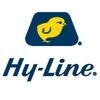Preferences for preen oil constituents may help explain feather-eating behaviour in hens
Published: September 26, 2025
Source : S. CHO 1 and E. ROURA 1 / 1 The University of Queensland, St. Lucia QLD 4072.
Feather pecking is synonymous with economic and major welfare problems in the poultry industry and is positively associated with feather ingestion. In a choice-feeding experiment, laying hens showed a stronger preference for unwashed compared to washed feathers (McKeegan and Savory, 2001). The attraction toward unwashed feathers could be related to the preen oil produced by the uropygial glands located dorsally at the base of the tail. Preen oil covers the feathers during the process of preening. The main fatty acids present in the oil are lauric, myristic, palmitic, and stearic acids but the relative amounts seem to change with age and diet. For example, the long-chain fatty acids (palmitic and stearic acids) increase with age while the medium and short-chain fatty acids decrease (Sandilands et al., 2004). Therefore, it is possible that changes in fatty acid composition in the preen oil, relative to age and/or individual birds drive the attraction ultimately causing feather pecking. However, specific fatty acid preferences and appetites in birds have rarely been studied. Thus, the aim of this work was to assess differences in specific fatty acid preferences between feather eating (FE) and non-feather eating birds (NFE).
Individually caged 96 laying hens were offered a double choice test consisting of two containers, a control feed (ground wheat) and the same supplemented with one of the four main fatty acids in preen oil (i.e. lauric, myristic, palmitic, and stearic). In addition, we tested two mixtures of the same fatty acids at a similar ratio of the preen oil constituents reported for young (MP-young) or old (MP-old) hens to give a more practical perspective to our study. All treatments were tested at 1 and 5% concentrations. At the end of the trial, the hens were euthanised and feather consumption was assessed by necropsy. Preference values (test feed intake divided by total intake) of each treatment were compared to the random choice value of 50%. The significance of the main effect “feather eating”, (FE vs NFE), was assessed using the GLM procedure of SAS.
All laying hens showed strong (p< 0.05) rejection of 5% lauric and myristic acid addition while no differences were found for palmitic and stearic acids. The results are consistent with previous findings that chickens preferred long-chain over medium-chain fatty acids in the diet (Furuse et al., 1993). Moreover, while the 5% MP-young mix was rejected (p< 0.05), the MP-old mix was not (p> 0.05), possibly due to the lower lauric and myristic content of the MP-old compared to the MP-young. Hence, more frequent feather pecking behaviours in older laying hens may be an effect of less lauric and myristic acids in the preen oil. In addition, only FE birds showed rejection of 1% laulic and myristic acids (p< 0.05) suggesting that FE birds were more sensitive to these two acids. In conclusion, this study suggests that taste, and/or odour of specific fatty acids could be an important factor in the attraction to feathers in FE behaviour. These results add to previous findings in our group strongly advocating dietary approaches to prevent feather pecking.
ACKNOWLEDGEMENTS: The study was supported by Australian Egg Corporation Limited.
Presented at the 29th Annual Australian Poultry Science Symposium 2018. For information on the latest and future editions, click here.
Furuse M, Mabayo RT, Choi YH, Denbow M & Okumura J (1993) Br. Poult. Sci. 34: 211-217.
McKeegan DEF & Savory CJ (2001) Appl. Anim. Behav. Sci. 73: 131-140.
Sandilands V, Powell K, Keeling L & Savory CJ (2004) Br. Poult. Sci. 45: 109-115.
Content from the event:
Related topics:
Mentioned in this news release:

Recommend
Comment
Share

Would you like to discuss another topic? Create a new post to engage with experts in the community.













